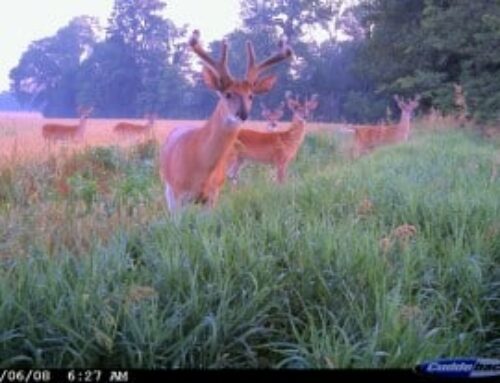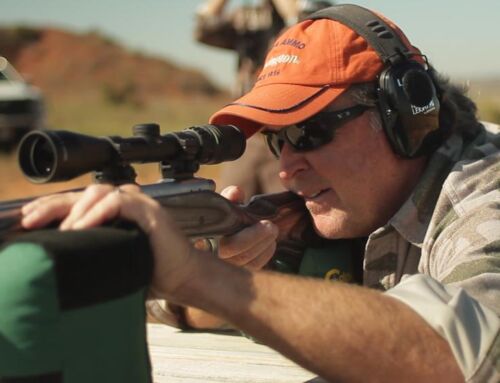 Excellent guest blog and advice from Montana traditional archer Luke Strommen, a charter member of the Big Deer Hunt Team:
Excellent guest blog and advice from Montana traditional archer Luke Strommen, a charter member of the Big Deer Hunt Team:
To all the BIG DEER Bloggers:
Here is story and a lesson I have learned. Hope it helps you find a big buck and shoot him this season.
One time I spotted a gnarly 6×6 during my scouting and glassing routines in the summer. The mature whitetail used his primary core area throughout July and August. I saw him many times and took some distant digital images of him from one of our tree stands. He would browse in an irrigated alfalfa field, and having completed his evening ritual, he’d sneak off to spend the night in a 20-acre corn field nearby.
He continued this pattern into the early archery season in September, consistently passing by one of my stands, but late. I waited for the wind to be right and sat the stand three times in early September, only to have the buck come by on the 16-yard trail just after legal and ethical shooting light.
This “12-point” as my Eastern friends would call him wasn’t the largest buck I had seen that summer on the Milk River, but he was a much sought after 6×6. A clean 6×6 is hard to come by, especially for a recurve hunter like me.
As the season progressed, the buck’s pattern changed, and he became less visible and more unpredictable. He would spend a week or 2 in different “sub-core areas” in the vicinity as food sources changed with the late-fall weather pattern. Remember that, because any big deer you find now might do that in a few months.

But ultimately the buck came back to his familiar, primary core area where I had spotted him all summer, to the place where he felt most dominant and comfortable. I figured he would do that and I was right. I spotted his 12-point rack whirling and twirling early in the afternoon of November 1. He was warding off inferior bucks, posturing his antlers like weapons to the stubborn invaders of his domain.
Since I had scouted this area so much, I knew how the buck used the place, and where he liked to travel. It paid off. That was back in the mid-2000s when there were a lot of deer on the Milk River, and when I was guiding a few bowhunters on our farms.
I put a hunter from Texas in the same spot where I had spotted the 6×6 several times in low light in September. On the 2nd of November, with the pre-rut kicking into gear, the buck was a lot less cautious as he strode by the stand with 45 minutes of shooting light to spare. The hunter placed a sharp broadhead right through his oxygen tank.
The big lesson: Scouting your buck early and often in the summer pays off, even if you can’t connect on him during the first weeks of archery season. You might “lose” your mature deer for a few days or even weeks, but the rutting phases of the fall will generally bring him back to his primary core area, where one day he might finally make a mistake. One day in November or even December you might finally kill the buck from one of the stands you hunted way back in the first week. Good luck this fall.—Luke







The ultimate guide! I was reading more to prepare for the season coming then found out your article, it’s really helpful for me! Thanks!